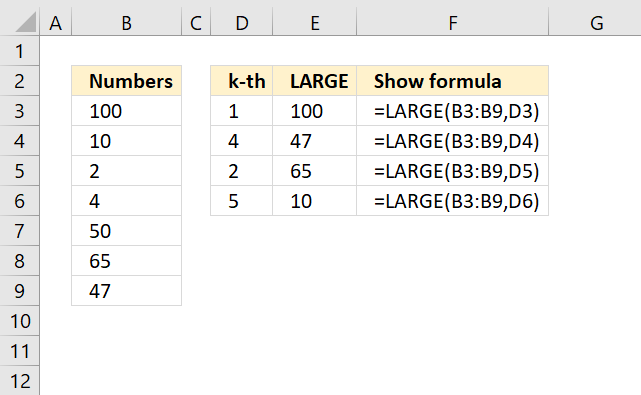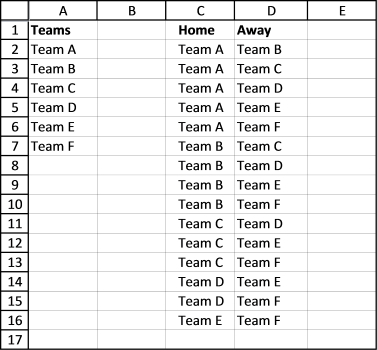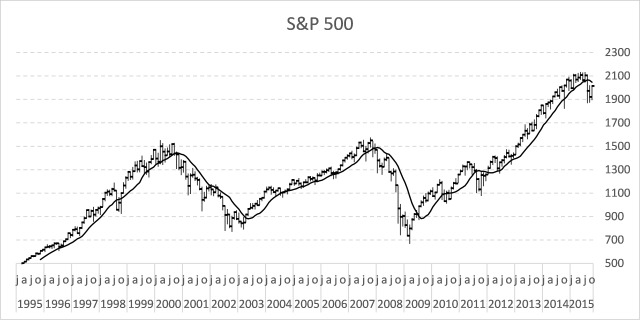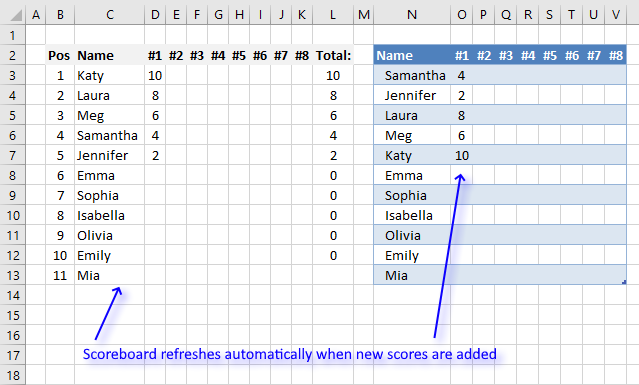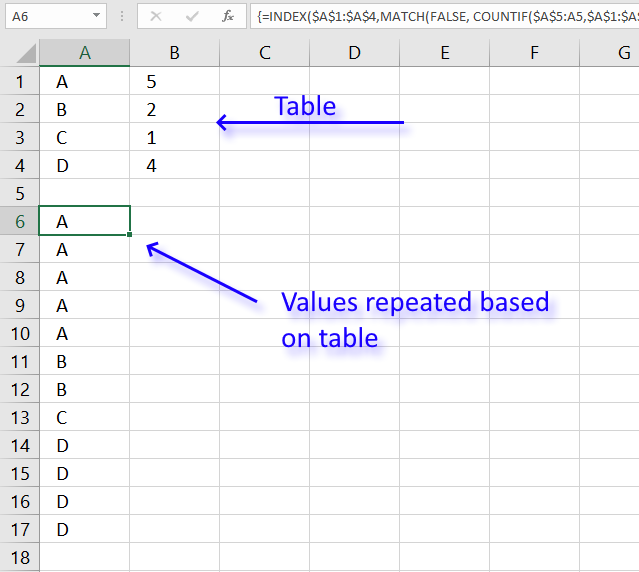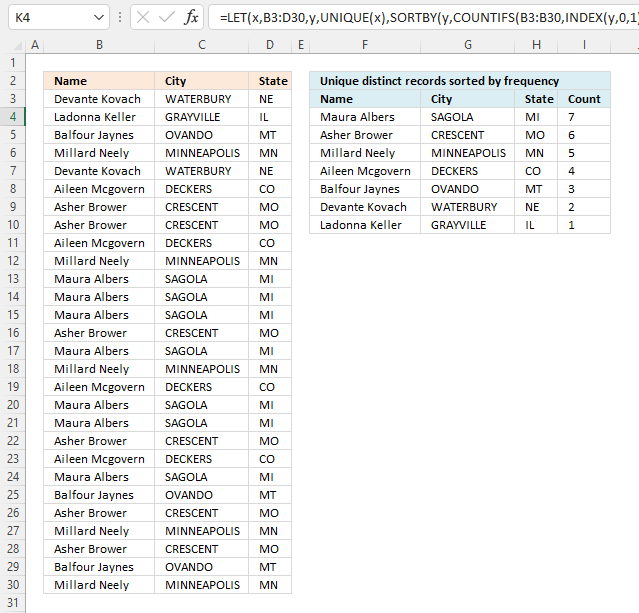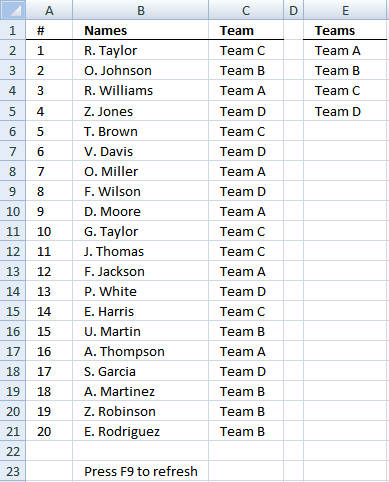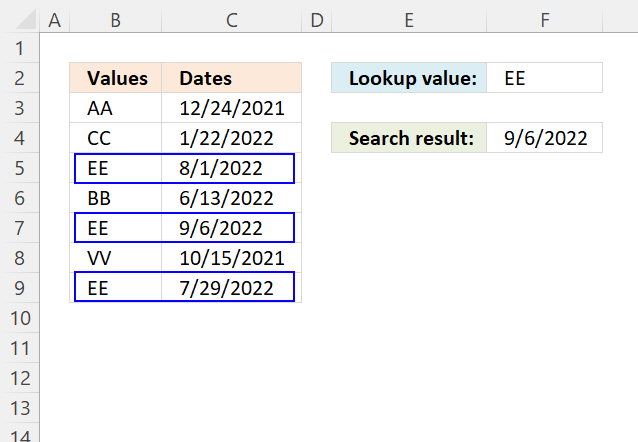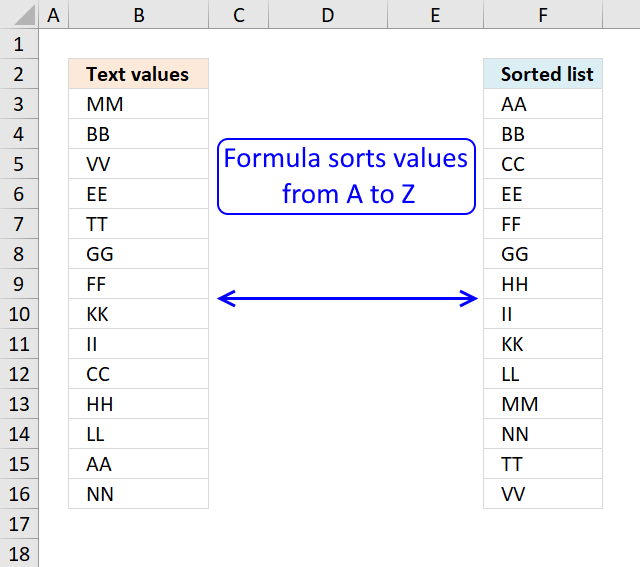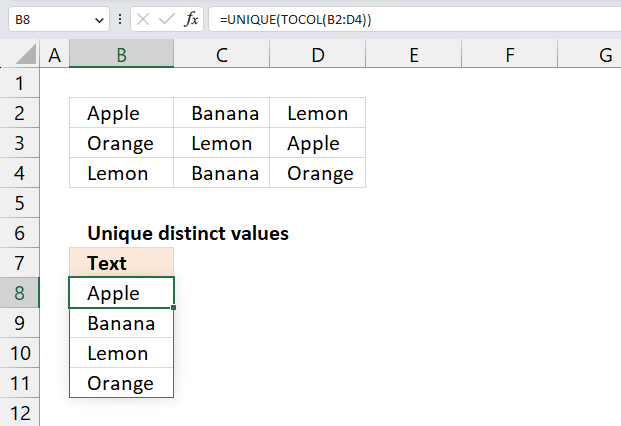'LARGE function' category
How to use the LARGE function
What is the LARGE function? The LARGE function calculates the k-th largest value from an array of numbers. Use the LARGE […]
What is the LARGE function? The LARGE function calculates the k-th largest value from an array of numbers. Use the LARGE […]
Rotating unique groups with no repeat
This article demonstrates ways to create unique groups with no repeat. The first example shows a formula that returns random […]
This article demonstrates ways to create unique groups with no repeat. The first example shows a formula that returns random […]
How to generate a round-robin tournament
This article demonstrates macros that create different types of round-robin tournaments. Table of contents Basic schedule - each team plays […]
This article demonstrates macros that create different types of round-robin tournaments. Table of contents Basic schedule - each team plays […]
Follow stock market trends – Moving Average
In my previous post, I described how to build a dynamic stock chart that lets you easily adjust the date […]
In my previous post, I described how to build a dynamic stock chart that lets you easily adjust the date […]
Dynamic scoreboard
This article demonstrates a scoreboard, displayed to the left, that sorts contestants based on total scores and refreshes instantly each […]
This article demonstrates a scoreboard, displayed to the left, that sorts contestants based on total scores and refreshes instantly each […]
Repeat values across cells
Table of Contents Repeat values Repeat the range according to criteria in loop Find the most/least consecutive repeated value […]
Table of Contents Repeat values Repeat the range according to criteria in loop Find the most/least consecutive repeated value […]
Unique distinct records sorted based on count or frequency
This article demonstrates how to sort records in a data set based on their count meaning the formula counts each […]
This article demonstrates how to sort records in a data set based on their count meaning the formula counts each […]
Team Generator
Table of Contents Team Generator Dynamic team generator How to build a Team Generator - different number of people per […]
Table of Contents Team Generator Dynamic team generator How to build a Team Generator - different number of people per […]
Find the most recent date that meets a particular condition
This article demonstrates how to return the latest date based on a condition using formulas or a Pivot Table. The […]
This article demonstrates how to return the latest date based on a condition using formulas or a Pivot Table. The […]
Sort a column alphabetically
Table of Contents Sort a column - Excel 365 Sort a column using array formula Two columns sorting by the […]
Table of Contents Sort a column - Excel 365 Sort a column using array formula Two columns sorting by the […]
Extract unique distinct values from a multi-column cell range
This article demonstrates ways to list unique distinct values in a cell range with multiple columns. The data is not […]
This article demonstrates ways to list unique distinct values in a cell range with multiple columns. The data is not […]
